Video by Dennis Palacios
Story by Erika Pedroza
A group of engineering students at Nimitz High School.
Their instructor.
A middle school orchestra teacher.
The Irving Schools Foundation.
All have banded together to provide an Austin Middle School student, who might not otherwise have the chance, an opportunity to learn to play the cello.
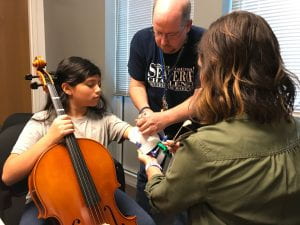 Kayla Arqueta was born without a left forearm and hand. But she has never allowed it to be a hindrance. Last year as a fifth grader at Gilbert Elementary School, Kayla decided that she wanted to be in middle school orchestra to distinguish herself from her older brother and sister, who were in band and choir.
Kayla Arqueta was born without a left forearm and hand. But she has never allowed it to be a hindrance. Last year as a fifth grader at Gilbert Elementary School, Kayla decided that she wanted to be in middle school orchestra to distinguish herself from her older brother and sister, who were in band and choir.
“I couldn’t look at Kayla and say no,” says Carly Addison, orchestra director at Austin Middle School. “When you see a kid advocate for themselves, you just have to do it. Then, it was like all the doors just opened up.”
Through some Google research, Mrs. Addison stumbled across an article about musical prosthetics developed by Dr. Jennifer Mankoff with the Human Computer Interaction Institute at Carnegie Mellon University. Mrs. Addison called the phone number listed on the website, and, much to her surprise, was answered by Dr. Mankoff.
“This is a renowned researcher associated with Google, IBM, Microsoft, and she just answered the phone with a, ‘Hi, It’s Jen,” recalls Mrs. Addison. “After confirming it was Jen – as in Jennifer Mankoff – I explained why I was calling, and she said the blueprints on the website were free for public use. We just needed 3D printing technology.”
Fellow Austin Middle School teacher Theresa Spencer, who previously worked at the district’s Singley Academy, informed her that all high schools had 3D printers through the Signature Studies (career and technical education) department. So Mrs. Addison reached out to the department, who put her in touch with Dwight Davison, engineering teacher at Nimitz High School.
“The real testament to Irving ISD was when we first met with Mr. Davison,” says Mrs. Addison. “He could’ve so easily blown us off.”
But he didn’t. Although Mr. Davison had barely tinkered with 3D printing prior to this summer, he didn’t think twice about taking on the project.
“What an incredible opportunity for my students,” he says. “My students will get real-world application. It’s important for their work to mean something. It’s important to help Kayla be a part of the orchestra at her school. If they were willing to do it, I was willing to learn and teach it the best I can.”
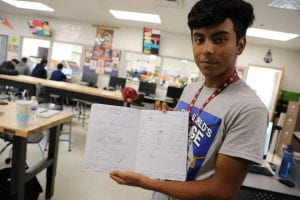 In total, six students signed up to work on the project. All of the students are certified in AutoCAD (used for design and drafting) and Inventor (used for mechanical design and 3D rendering), as well as OSHA (safety in the workplace) through Signature Studies.
In total, six students signed up to work on the project. All of the students are certified in AutoCAD (used for design and drafting) and Inventor (used for mechanical design and 3D rendering), as well as OSHA (safety in the workplace) through Signature Studies.
One team of four students meets during one class period, and a team of two meets in another. The students have their class period to work on the project and they are able to come in during lunch, before school or after school, to work some more. But whatever they work on must stay in the classroom so that other students can build off it and share the files.
While the students took the blueprints developed by Dr. Mankoff to print a prototype, they are taking it a step further and finding ways to improve the prosthetic – using different filament to make it more comfortable for Kayla and more durable, modifying the calculations to make it slimmer, making it more fully functional with a greater range of motion, using the 3D printer to create a bolt and screw so the prosthetic is more lightweight, to name a few.
“Everything begins with a sketch,” says Diego Zamora, one of the engineering students at Nimitz High School who took on the project. “Then you draw it on the computer using Inventor.”
After entering the calculations in Inventor, the students use Cura 3D printing software
“It basically takes the design and changes the file to language for the 3D printer design,” explains Zamora.
Although the students have had to work through the challenges of being in different class periods, as well as perfecting size specs and varying temperature requirements based on filament, the students have plenty of resources to perfect their craft, thanks to a grant from the Irving Schools Foundation. And they plan to continue to hone the project so that Kayla has the opportunities she deserves.
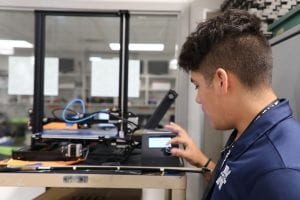 “I’ve always had a passion for music,” says Nimitz High School senior Melvin Villalobos, who has participated in band for seven years. “If Kayla wants to continue doing music, I’ll do whatever I can for her to keep pursuing music. Plus, if you have the power to help people, do it.”
“I’ve always had a passion for music,” says Nimitz High School senior Melvin Villalobos, who has participated in band for seven years. “If Kayla wants to continue doing music, I’ll do whatever I can for her to keep pursuing music. Plus, if you have the power to help people, do it.”
Melvin isn’t the only one with that helping spirit. It is apparent across the entire district.
“When you have a desire to help a student, there are resources,” says Mrs. Addison, who, by the way, has learned to play the cello backwards to teach Kayla. “Because we are in Irving, there was a path to follow. We weren’t scrambling for resources or having to search outside. Everything that we needed was available to us, and everyone was willing to help. But here’s what makes it even cooler.
“How many districts can say, ‘We had a student with a need, and other students in our district created a solution.’ It’s so amazing.”
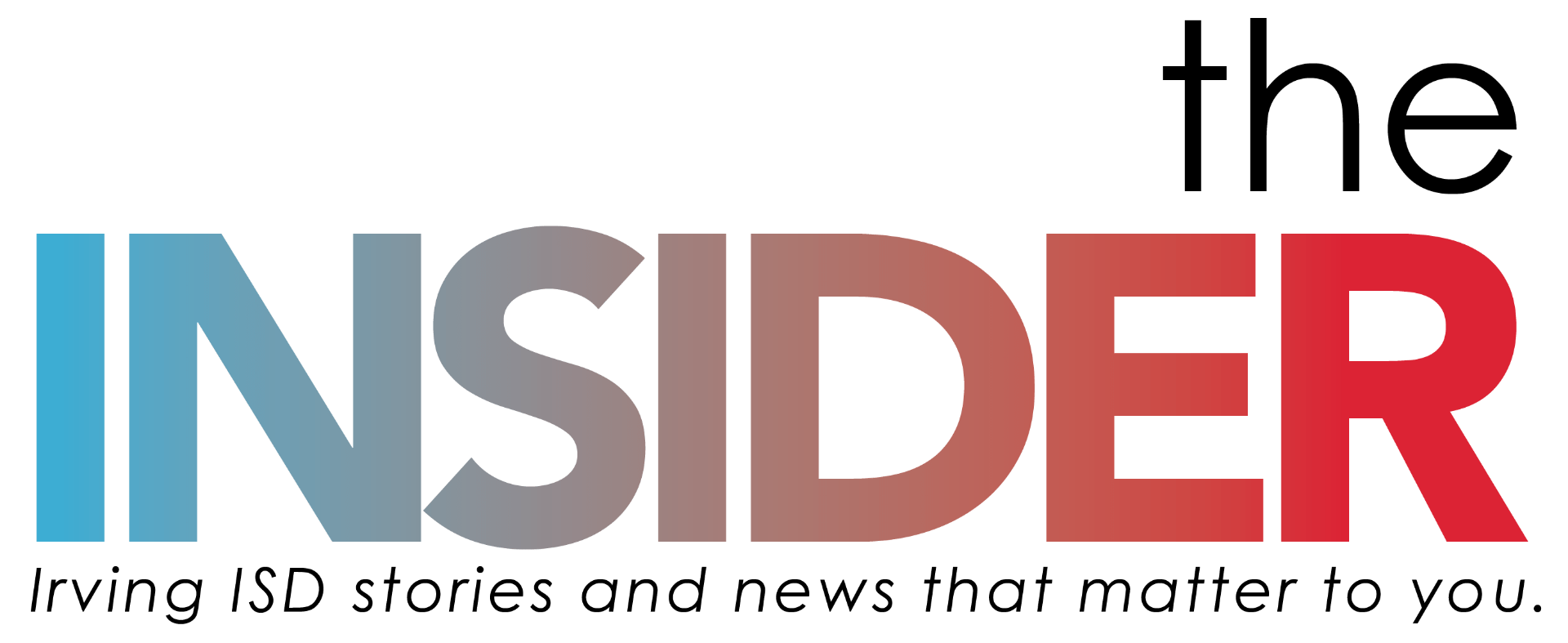

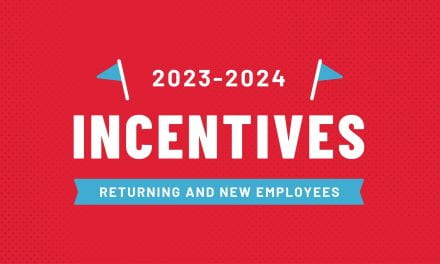



Trackbacks/Pingbacks